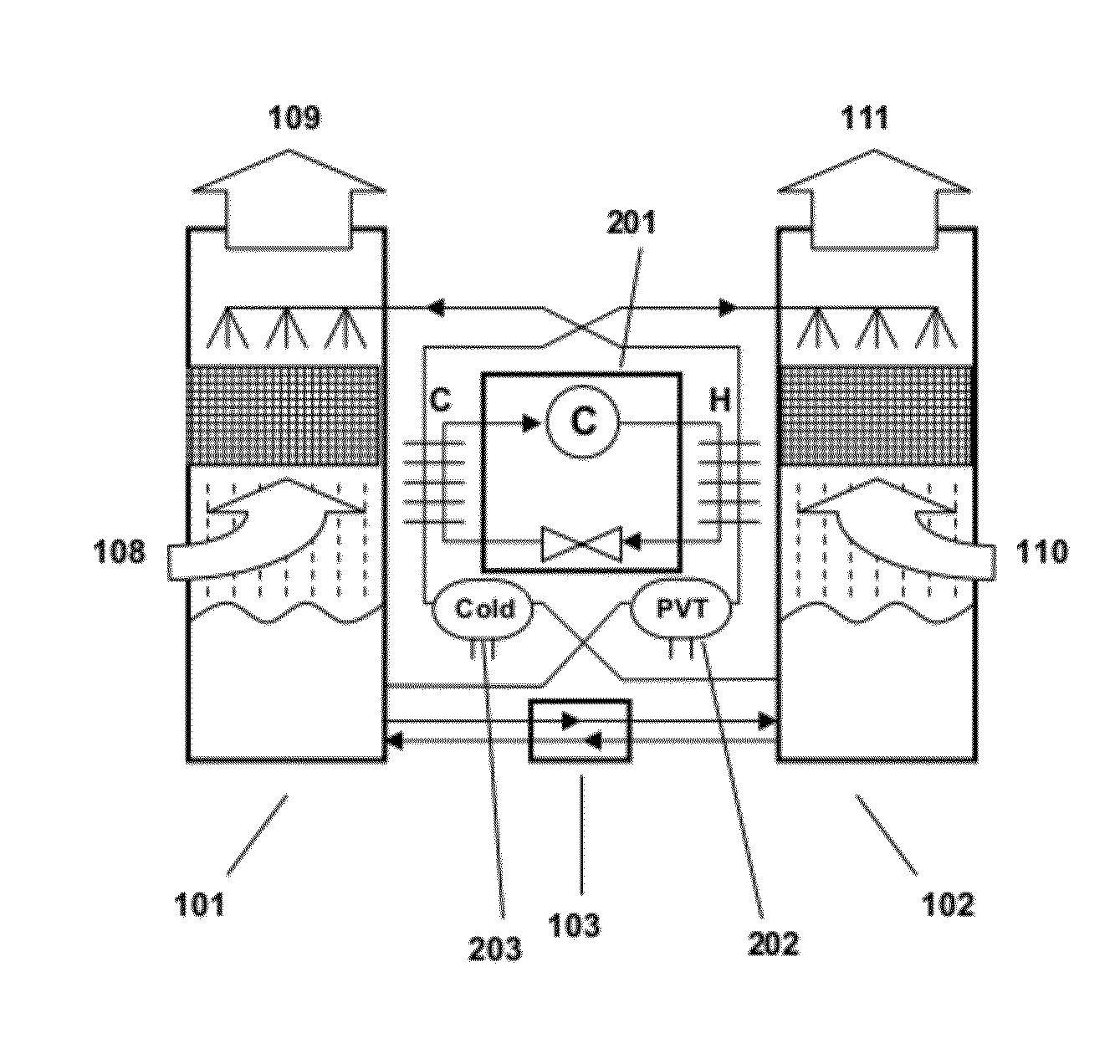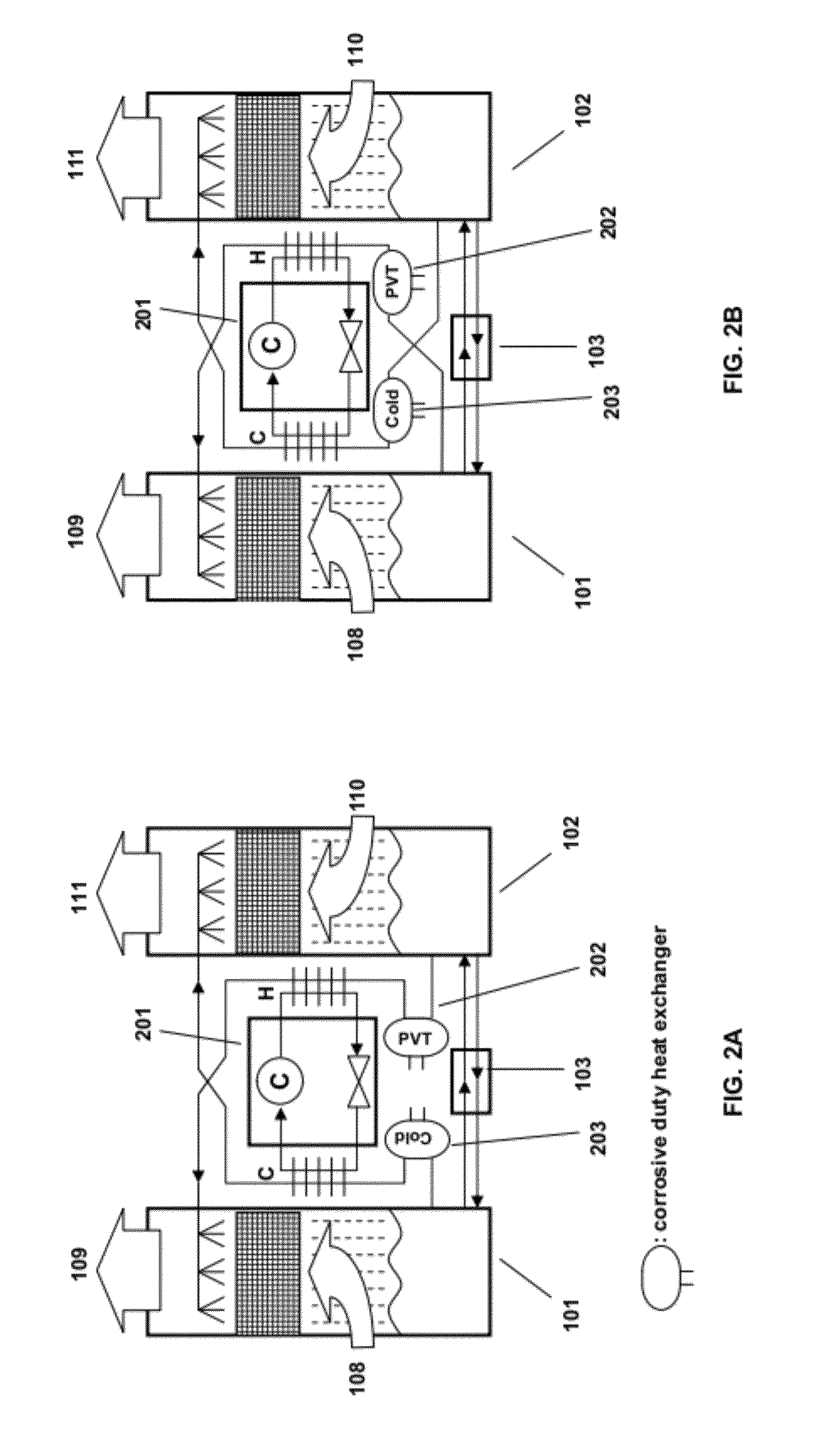Methods and systems for desiccant air conditioning with combustion contaminant filtering
a technology of desiccant air conditioning and contaminant filtering, which is applied in the direction of domestic cooling apparatus, heating types, separation processes, etc., can solve the problems of air conditioning being the largest operating cost in a building, the electricity grid is often affected, and the humidity level is too low for comfor
- Summary
- Abstract
- Description
- Claims
- Application Information
AI Technical Summary
Benefits of technology
Problems solved by technology
Method used
Image
Examples
Embodiment Construction
[0104]FIG. 1A depicts a liquid desiccant air conditioning system as known in the prior art. A desiccant conditioner 102 contains a liquid desiccant in a bath 104. The liquid desiccant 104 can be any suitable solution that attracts water vapor from the outdoor air 110 that is blown into the conditioner 102. The air moves through a filter media 106 that usually comprises a convoluted surface that easily holds and exposes the desiccant to the air stream. Examples of desiccants include CaCl2 and LiCl2. The filter media can be a cellulosic cooling tower fill material. Diluted desiccant 105 that has absorbed water drips from the filter media 106 into the desiccant bath 104. The spray head 107 distributes the concentrated desiccant evenly across the filter media 106. Dehumidified and cooled air 111 is directed into the building. A portion (usually around 10%) of the diluted desiccant 112 is brought through a heat exchanger 103 to a regenerator 101. The majority of the desiccant 112 is brou...
PUM
| Property | Measurement | Unit |
|---|---|---|
| temperatures | aaaaa | aaaaa |
| temperature | aaaaa | aaaaa |
| temperatures | aaaaa | aaaaa |
Abstract
Description
Claims
Application Information
 Login to View More
Login to View More - R&D
- Intellectual Property
- Life Sciences
- Materials
- Tech Scout
- Unparalleled Data Quality
- Higher Quality Content
- 60% Fewer Hallucinations
Browse by: Latest US Patents, China's latest patents, Technical Efficacy Thesaurus, Application Domain, Technology Topic, Popular Technical Reports.
© 2025 PatSnap. All rights reserved.Legal|Privacy policy|Modern Slavery Act Transparency Statement|Sitemap|About US| Contact US: help@patsnap.com



